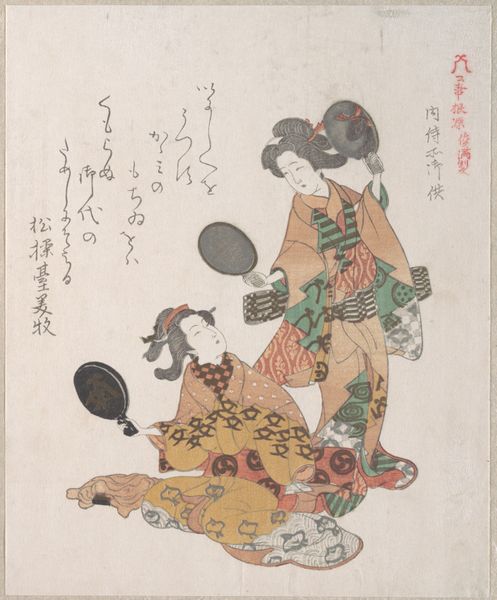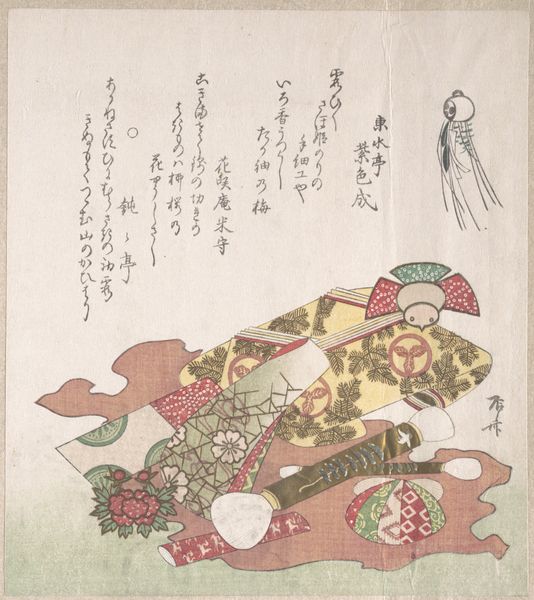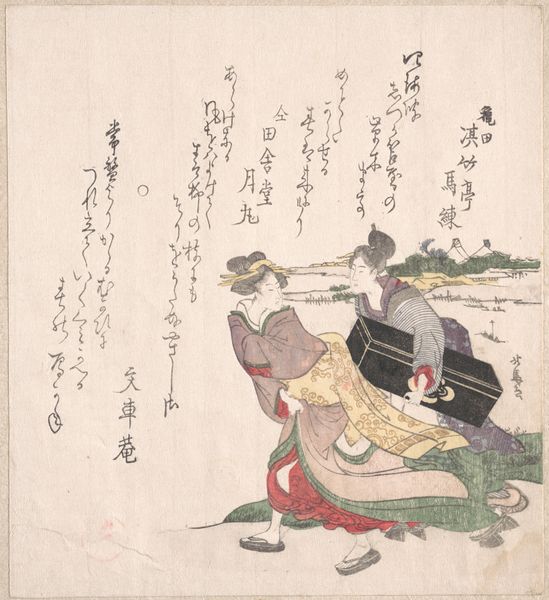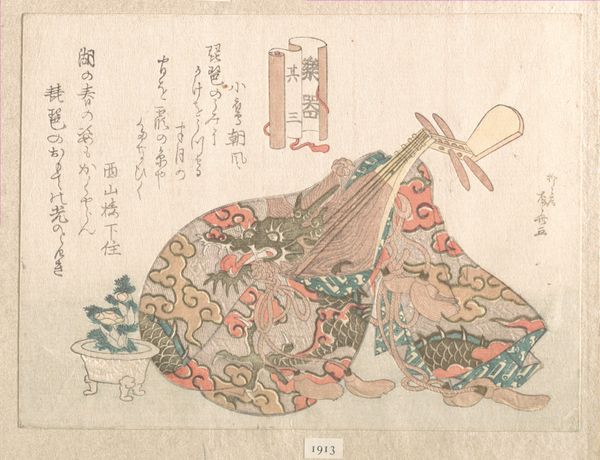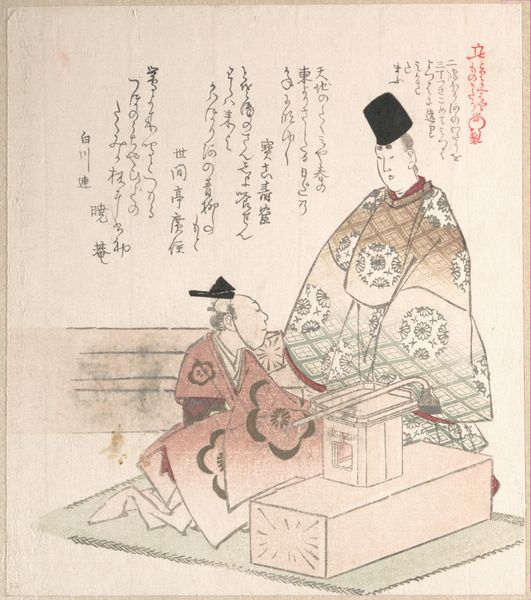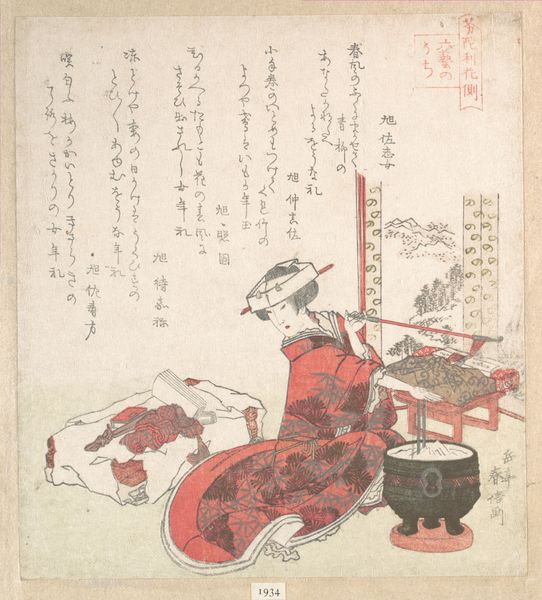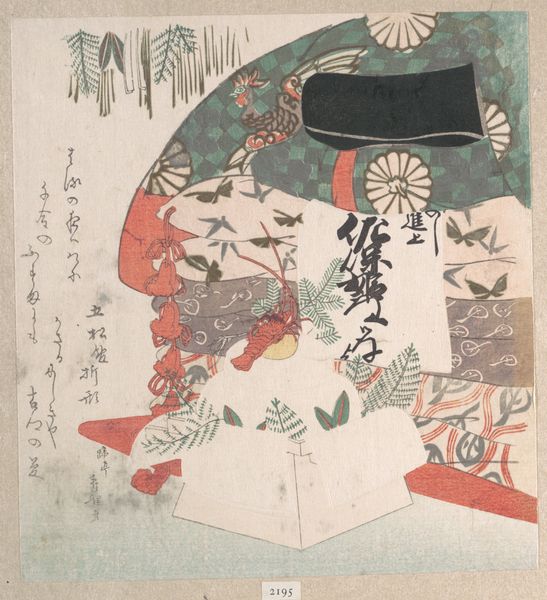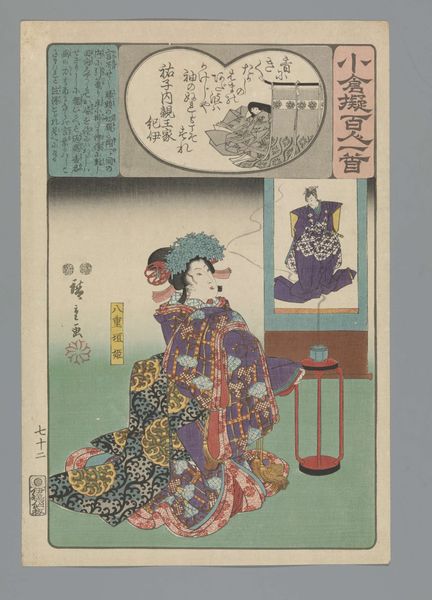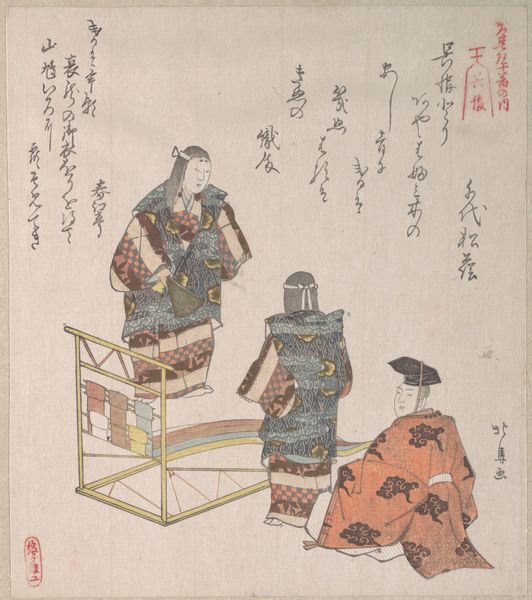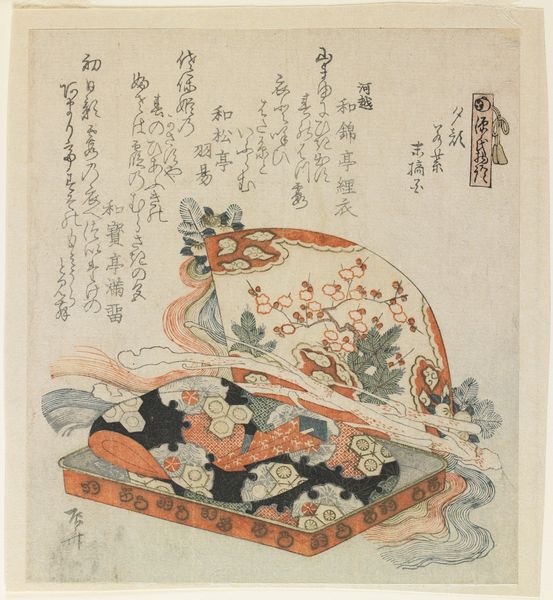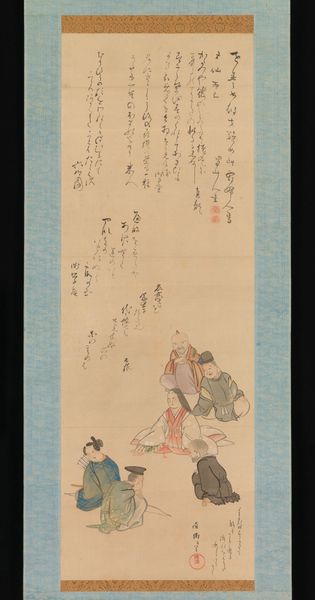
# print
#
asian-art
#
ukiyo-e
#
figuration
#
intimism
Dimensions: 8 1/4 x 7 5/16 in. (21 x 18.6 cm)
Copyright: Public Domain
Curator: Let's discuss "Two Courtesans," a Japanese woodblock print crafted sometime between 1750 and 1835 by Ryūryūkyo Shinsai, housed here at the Metropolitan Museum of Art. Editor: Immediately, the intricacy of the kimono designs grabs me – the labor, the dye processes, the textile trade necessary to produce such visually dense garments is immense. Curator: Indeed, these details speak to the culture of the ukiyo-e genre. Beyond depicting fashionable beauties, they’re encoding entire social narratives through clothing. The patterns, motifs, and color choices speak to status, taste, and even symbolic allegiances. The phoenix on one robe is a good example. Editor: And the woodblock technique itself—the number of blocks needed to layer each color and pattern must have required collaborative skilled craftspeople! This print is not just "art," it’s the material culmination of multiple artisan’s skill. Curator: Precisely, there is something powerful in the way this image serves almost as an archetype; it represents not simply individuals but speaks to social conventions around femininity and leisure of the time. Note the contrast between the figures – one stands, watchful, while the other is seated, a fan coyly raised. There is an implied narrative beyond mere representation. Editor: The implied narrative, however, takes place within very specific material conditions. Are we romanticizing what, in reality, was commodified labor? I wonder, could this be a type of advertisement, or wishful-thinking of the bourgeois, displayed and then consumed? Curator: An important distinction to consider; a point for questioning the narratives these works construct versus their social realities. Editor: By thinking about who created and acquired the image, perhaps we can deconstruct, layer by layer, a complex intersection of aesthetics and exploitation. Curator: Considering your point on consumption, I find myself thinking how that act becomes almost performative by possessing art from this time period; holding on to what may become nothing more than just history and myth. Editor: It’s a beautiful and troubling dance. It does seem to force an awareness upon ourselves that there will always be more below the surface and, materially, what is not readily visible matters greatly.
Comments
No comments
Be the first to comment and join the conversation on the ultimate creative platform.

